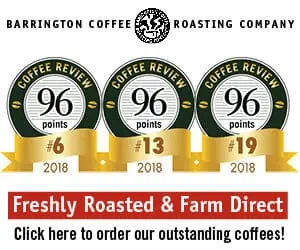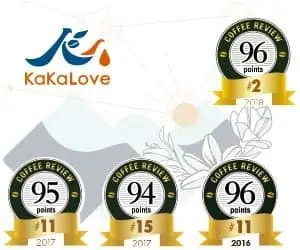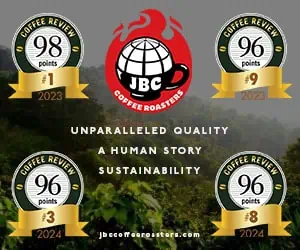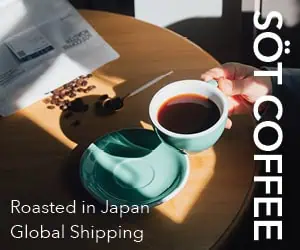Coffee growing regions strung along the rugged Andes from central Colombia south through Peru have much in common: high growing altitudes; a reliance on sturdy, simple varieties of arabica like typica and caturra; small-holding farmers whose struggle to produce fine coffee is challenged by daunting transportation problems and sporadic social and political conflict. As in so many other places in the world, potentially small lots of splendid coffees may end up buried in container-loads of ordinary coffees, victims to slow trucks (or no trucks), commodity thinking, careless handling, and the discouraging impact of low coffee prices.
Countering all of these obstacles are efforts by development agencies, coffee federations, various non-governmental organizations and adventurous young coffee buyers aimed at raising the quality and prices of these coffees and leveraging the best ones out of the stream of the ordinary into the realm of the exceptional.
A Best of Both Worlds Candidate
As this month’s reviews attest, such efforts to identify, support and promote distinctive coffees from the Andean regions have generated by far the most success in southern Colombia. Coffees of similar potential probably ripen on trees in Bolivia and Peru, but the process of finding those coffees, meticulously processing them and getting them to market promptly in small, select lots is not nearly as well developed as in Colombia, with its better infrastructure, better consumer recognition, and long national focus on coffee production.
In fact, Colombia may be approaching “best of both worlds” status as coffee producer. On one hand, the standard Colombias are still rolling down to the ports and into “100% Colombian” supermarket cans whose contents put to shame the bland and woody coffees in other supermarket cans. At the same time, emerging from blessed little pockets along the slopes of the Andes in south-central and southern Colombia, tiny lots of amazing and exceptional coffees also have been surfacing over the last couple of years, coffees that are challenging the best Kenyas in quality and distinction.
The Purely Great and the Slightly Impurely Spectacular
As was the case the last time we sampled Colombias (Colombia Runs the Table: Twelve at Ninety, February 2006), a virtual embarrassment of 90-and-better rated coffees turned up: Of the twenty-two we cupped this month, thirteen scored 90 or better. In style, many of these coffees were similar, representing a sort of super-Colombia profile, an apotheosis of the type: pure in character, intense in aroma, sweet but assertive in acidity, big and syrupy in body, balanced in structure, clean and rich in finish, with straightforward, no-frills aromatics: coffee flowers and sweetly tart coffee fruit with hints of chocolate and cedar.
I confess that my favorites among these high-rated Colombias showed a slight, very slight, tendency to what we might call impurity – a complicating hint of difference that deepened and diversified the classic aromatics, as in the 96-rated Paradise Roasters Tolima Reynel Perez and the 94-rated Coffee Klatch Huila Supremo. Perhaps this beauty-mark-enhanced loveliness derived from some interaction of weather, terroir and variety, or perhaps it was the felicitous impact of some variation during fruit removal and drying – just the right amount of time in the fermentation tank, for example.
Still in Colombia’s Shadow
Judging from this month’s very small sampling, coffees from Bolivia and Peru are improving, but remain a step or two behind their brethren to the north in terms of distinction. The difficulty faced by Bolivia and Peru in achieving greater recognition for their coffees appears to be a result of classic chicken-and-egg gridlock. Because there is little consumer recognition of these origins to start with, their coffee industries fail to attract the prices and attention needed to encourage the work needed to produce the small lots of very distinctive coffees needed to attract the recognition that is needed to encourage the work, and so on. Of the twenty-one roasting companies that submitted samples, all but one sent Colombias but only five sent Perus and three Bolivias. Of this total of eight non-Colombian samples, one, the Peru Cochapampa from Flying Goat, scored a 90 and three others, including two Bolivias, attracted respectable 89’s.
Although none of the Perus and Bolivias we cupped this month displayed the syrupy mouthfeel and aromatic intensity of the best Colombias, several did exhibit an attractively crisp, cocoa-laced delicacy, a delicacy often associated with these origins. It remains a mystery to me why coffees produced at similar altitudes as the southern Colombias reviewed here, from similar varieties of arabica, should display such consistently different character, in this case delicately lean body and distinct cocoa notes. I certainly invite hypotheses and explanations from readers, particularly explanations that derive from direct, on-the-ground observation.
One edge that Peru and Bolivia coffees do carry into the American specialty market derives from the same limitations in history and infrastructure that haunt them. All of the Perus and Bolivias submitted this month were certified organically grown, whereas none of the Colombias were. Quite simply, most producers in Bolivia and Peru probably never used chemical inputs or pest controls because they couldn’t afford to, giving those agencies helping to develop these coffees an opportunity to formalize and promote their organic status.
2007 The Coffee Review. All rights reserved.










